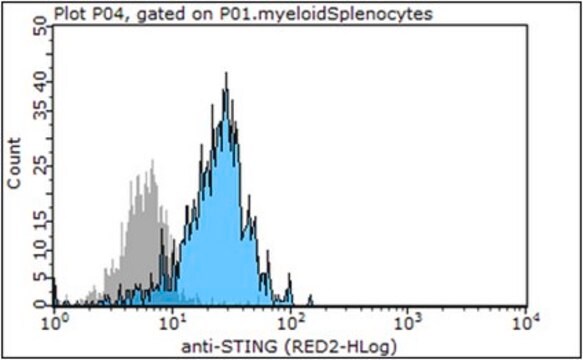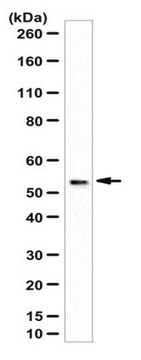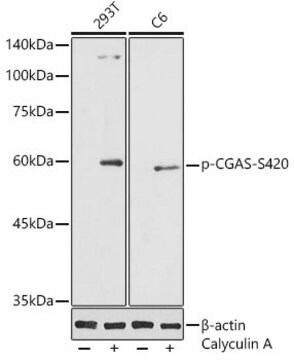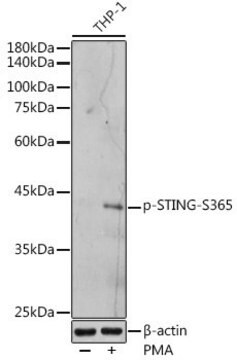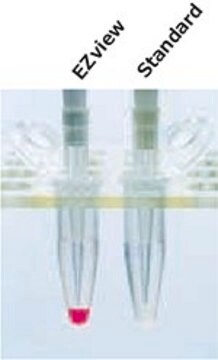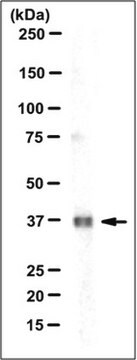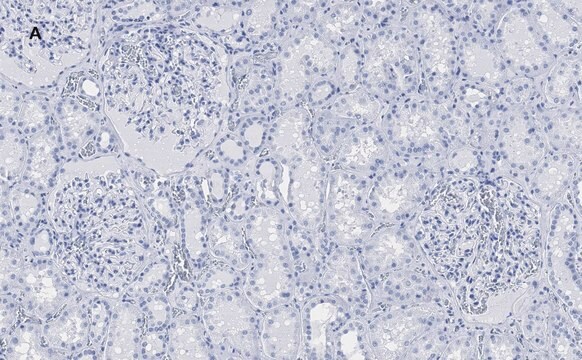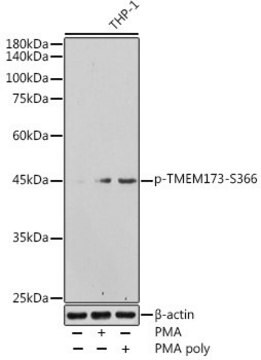MABF270
Anti-STING Antibody, clone S17G2C4B7
clone S17G2C4B7, from mouse
Sinónimos:
Stimulator of interferon genes protein, Endoplasmic reticulum interferon stimulator, ERIS, hMITA, hSTING, Mediator of IRF3 activation, Transmembrane protein 173
About This Item
Productos recomendados
biological source
mouse
Quality Level
antibody form
purified antibody
antibody product type
primary antibodies
clone
S17G2C4B7, monoclonal
species reactivity
mouse, human
technique(s)
immunocytochemistry: suitable
western blot: suitable
isotype
IgG1κ
NCBI accession no.
UniProt accession no.
shipped in
wet ice
target post-translational modification
unmodified
Gene Information
human ... TMEM173(340061)
General description
Specificity
Immunogen
Application
Inflammation & Immunology
Infectious Diseases - Viral
Immunocytochemistry Analysis: A 1:50 dilution from a representative lot detected the expression of exogenously transfected human and murine STING in HEK293T cells, as well as the endogenous STING in telomerase-immortalized human foreskin fibroblasts hTERT-BJ1 (Courtesy of Dr. Glen N. Barber, University of Miami School of Medicine, FL, U.S.A.).
Quality
Western Blotting Analysis: 1.0 µg/mL of this antibody detected STING in 50 µg of HEK293T cell lysate.
Target description
Physical form
Storage and Stability
Other Notes
Disclaimer
¿No encuentra el producto adecuado?
Pruebe nuestro Herramienta de selección de productos.
Storage Class
12 - Non Combustible Liquids
wgk_germany
WGK 1
flash_point_f
Not applicable
flash_point_c
Not applicable
Certificados de análisis (COA)
Busque Certificados de análisis (COA) introduciendo el número de lote del producto. Los números de lote se encuentran en la etiqueta del producto después de las palabras «Lot» o «Batch»
¿Ya tiene este producto?
Encuentre la documentación para los productos que ha comprado recientemente en la Biblioteca de documentos.
Nuestro equipo de científicos tiene experiencia en todas las áreas de investigación: Ciencias de la vida, Ciencia de los materiales, Síntesis química, Cromatografía, Analítica y muchas otras.
Póngase en contacto con el Servicio técnico